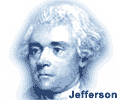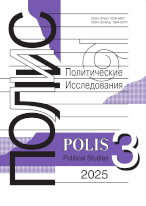Back to the Wall:
Myths and Mistakes that Made the Ukraine Crisis
Sakwa R.,
Professor of Russian and European Politics, University of Kent, Great Britain, R.Sakwa@kent.ac.uk
elibrary_id: 683723 | ORCID: 0000-0001-6678-8820 |
DOI: 10.17976/jpps/2015.04.06
Sakwa R. Back to the Wall: Myths and Mistakes that Made the Ukraine Crisis. – Polis. Political Studies. 2015. No. 4. https://doi.org/10.17976/jpps/2015.04.06
The fall of the Berlin Wall in November 1989 and the subsequent end of the Cold War had been attended by expectations of a new era of reconciliation and healing in Europe. Instead, on the 25th anniversary of the dismantling of the dividing line across Germany and Europe, Ukraine announced plans to build a new wall along its 2,295 kilometre-long border with Russia. This was an attempt physically to separate Ukraine from Russia, and reflected the deeper psychological and political gulf between the two countries. It also demonstrated that a new iron curtain threatened to divide Europe, no longer ‘from Stettin in the Baltic to Trieste in the Adriatic’, as Winston Churchill put it in his speech announcing the Cold War in Fulton, Missouri, on 5 March 1946, but from Narva on the Baltic to Mariupol on the Sea of Azov. Defenders of the new wall argue that this one is different, designed no longer to oppress people within its confines, but like the Great Wall of China, to keep the barbarians out; or like the Separation Wall in Palestine, to defend civilians. Some 274 people died along the Berlin Wall between its construction in August 1961 to its dismantling in November 1989, whereas according to the UN over 6,000 had died in Ukraine in the year after the beginning of armed conflict in April 2014 died. Walls and war have returned to the continent.
After more than a year of conflict, the causes of the Ukrainian crisis remain bitterly contested. As analysts and power brokers on both sides argue vehemently in favour of their interpretation of recent events, one essential point is often overlooked: the conflict is rooted in decisions made long before any fighting broke out. To fully understand what provoked the gravest geopolitical crisis of our time – a necessary first step if we hope to pull back from the brink of a profound disaster – we must regard it as an outgrowth of two events that helped shape the course of the twentieth century and continue to resonate today. The Yalta Conference of 4‑11 February 1945, held in the Livadia palace on the peninsula’s south coast, and the Malta Summit of 2‑3 December 1989, held on two ships off Marsaxlokk Harbour, are either long-forgotten or poorly understood by many in the West. Though they were quite different in substance and historical context, both meetings sought (and ultimately failed) to produce a more stable European security order. The two conferences act as symbolic turning points, with the Yalta conference acting as the foundation for a 45-year period, while Malta symbolises the failure to build constructively on the foundations of the end of the Cold War, and thus signaled the onset of the 25-period of the cold peace. The power shift witnessed at Malta was now complemented by a discursive shift. The pattern of post–Cold War politics was established, and the conditions were created that ultimately exploded in Ukraine in 2014. The Ukrainian crisis is only the latest symptom of the long-term failure to reconcile the various interests on the European continent over the last quarter century.
This failure also resulted in the absence of a coherent strategy vis-à-vis Russia. In practical terms three options were available. First, full-scale engagement, which could have taken the form of Russia joining a transformed NATO or equivalent structure, as an equal founding member; or the abolition of NATO and the strengthening of the OSCE or some equivalent as the supreme security body on the continent. The second option was to adopt a hedging strategy, which effectively entailed the strengthening and enlargement of Western institutions, while trying to mitigate the effects on Russia and other neighbours. This is effectively the position adopted by NATO, but also by the European Union. Despite all the talk of ‘partnership’, from the very beginning Russia was an indigestible and alien entity for the ‘wider Europe’ model of development, whereby the Brussels-centric world would encompass the smaller states of Central and Southeastern Europe and find some way of managing the relationship with those left outside, above all through various mechanisms of ‘external governance’. The third option was a transformation of the type envisaged by Gorbachev. One variant of this was the conscious strategy of creating a ‘greater Europe’, which itself could take many forms. One of these was the creation of a ‘union of unions’, whereby the EU and Russia would create some sort of pan-continental union. This would have created a dynamic whereby the logic of conflict on the continent would be transcended, based on economic and security integration of the sort applied to Germany and Japan after the Second World War. The problem with this model, however, was that this model of European development would not only have transcended the logic of conflict on the continent, but it would also have transcended the need for the Atlantic security community in its traditional form. In other words, America’s role in European affairs would have changed. This is one reason why all ideas for the transformation of European politics have been condemned as part of the traditional Russian attempt to drive a ‘wedge’ between the two wings of the Atlantic alliance.
See also:
Simonia N.A., Torkunov A.V.,
European Union’s energy security and Russia. – Polis. Political Studies. 2014. No5
Gorshkov M.K., Petukhov V.V.,
Foreign Policy Orientations of the Russians: a New Turn. – Polis. Political Studies. 2015. No2
Arbatova N.K.,
Relations of the European Union with the United States and NATO: dilemmas of euro-atlanticism. – Polis. Political Studies. 2024. No4
Sakwa R.,
The Crisis of World Order: Russia’s Impasse and Resistance. – Polis. Political Studies. 2016. No6
Kupriyanov A.V.,
Russia and India: problems and prospects for cooperation. – Polis. Political Studies. 2022. No4





.jpg)






 print
print
.jpg)
.jpg)